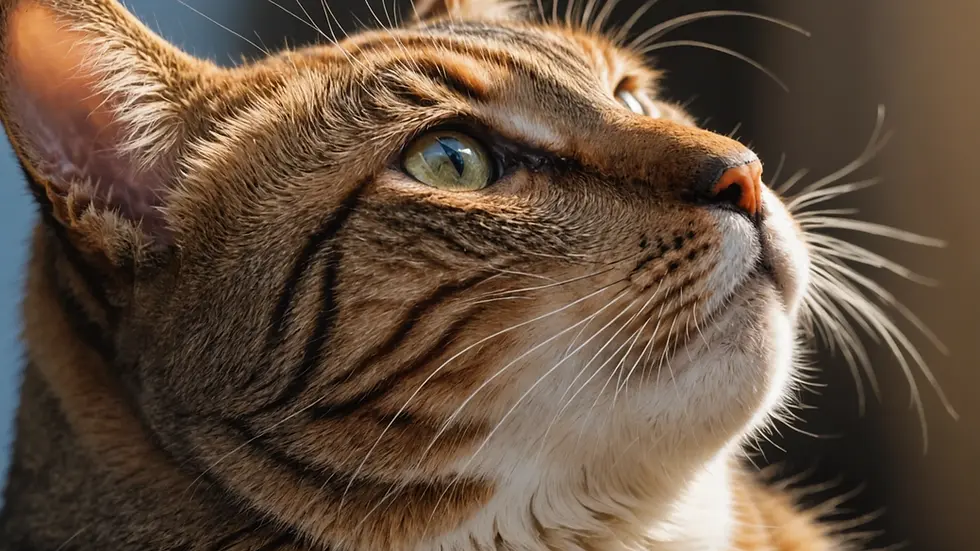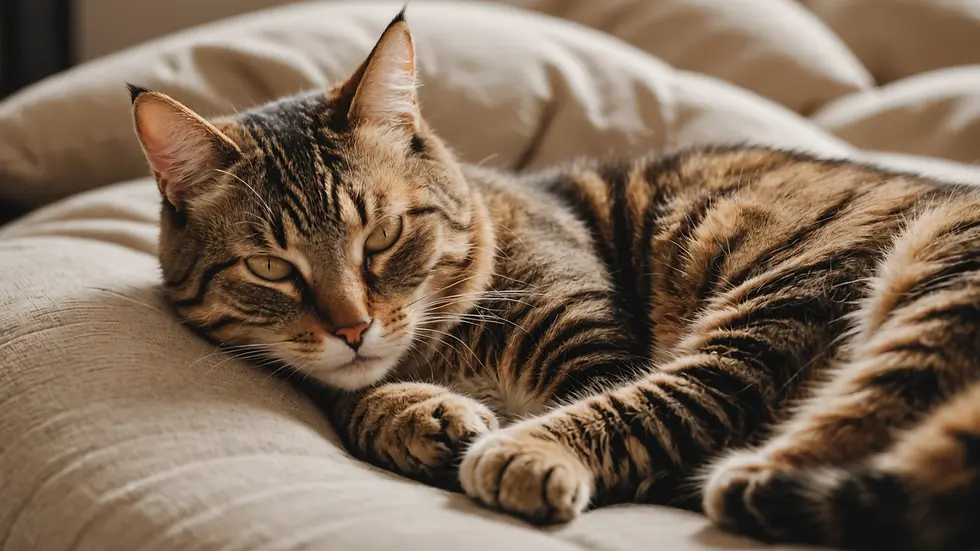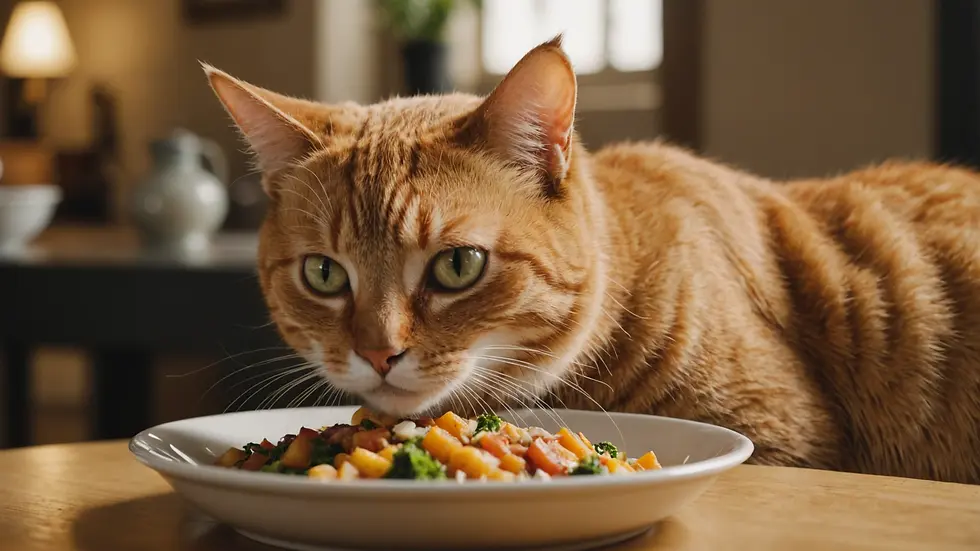How to Identify and Manage Cat Food Allergies: A Complete Guide
- Jyotiraj Borah
- Feb 7
- 5 min read
Cat food allergies can be an overwhelming puzzle for pet owners. One moment your cat is purring and playful, and the next, they are scratching their skin or struggling with stomach issues. Recognizing and managing these allergies is essential for your cat's overall health and happiness. This guide offers clear insights into the signs, causes, and effective management strategies for cat food allergies, helping cat owners navigate this complex issue.
Understanding Cat Food Allergies
Food allergies in cats develop when their immune system mistakenly identifies a food component as harmful. This misidentification triggers an inappropriate immune response, leading to various symptoms. The most common allergens in cat food include proteins such as chicken, beef, fish, and dairy. While grains are less frequently the source of allergies, some cats can still react negatively to them.
It is important to distinguish between food allergies and food intolerances. Food allergies involve an immune system response, while food intolerances typically relate to digestive issues and do not trigger immune reactions. This distinction plays a critical role in managing your cat's diet and well-being.
Recognizing the Symptoms
Spotting food allergies in cats can be tricky since their symptoms can mimic those of other health issues. Here are some common signs to keep an eye on:
Skin Irritations: Look for red, inflamed skin or signs of persistent scratching. For example, a study indicated that up to 10% of cats may suffer from skin allergies, often showing symptoms like excessive grooming or hair loss.
Gastrointestinal Distress: Symptoms like vomiting and diarrhea are common among allergic cats. Data shows that about 30% of cats with food allergies experience gastrointestinal issues.
Ear Infections: If your cat frequently has ear infections or tends to scratch their ears more than normal, this may signal an underlying food allergy.
Behavior Changes: Cats experiencing discomfort from allergies may become irritable or withdrawn. For instance, a previously playful cat may start to hide or react negatively to petting.
If your cat shows any of these signs, it is crucial to consult a veterinarian for a thorough diagnosis and to rule out other conditions.

Diagnosing Food Allergies
The process of diagnosing food allergies in cats involves careful planning and veterinary guidance. Here’s how you can move forward:
Consultation: Book an appointment with your veterinarian. They will review your cat's symptoms and health history.
Keep a Food Diary: Track what your cat eats and note any changes in behavior or health. This information can significantly aid your vet in identifying potential allergens.
Elimination Diet: Your vet may suggest an elimination diet, featuring novel protein sources that your cat has never eaten before, like kangaroo or rabbit. You usually need to maintain this diet for a minimum of eight weeks to measure any improvements.
Reintroduction: After the elimination period, gradually reintroduce past food items one at a time. This can pinpoint specific allergens when adverse reactions occur.
Allergy Testing: Sometimes, blood or skin tests are conducted to identify allergies. However, these tests can be less definitive than dietary trials.
Following this thorough evaluation process is vital for your cat to receive effective dietary support.
Managing Cat Food Allergies
Once a food allergy is confirmed, managing it involves adjusting your cat’s diet and closely monitoring their condition. Here are several key steps to consider:
1. Are Specialized Diets Necessary?
Many veterinarians suggest specialized diets for cats with food allergies. These may include limited-ingredient or hypoallergenic cat food that uses unique protein sources such as lamb or bison to minimize allergic reactions.
2. Home-Cooked Meals
Certain cat owners choose to cook meals at home. This gives you full control over what goes into your cat's food. If you opt for this route, it is essential to consult with a veterinarian or pet nutritionist to ensure that the meals are nutritionally balanced.
3. Avoid Treats and Table Scraps
During the management phase, it is crucial to refrain from giving your cat treats or human food. Even a small taste of potentially allergenic food can lead to a reaction, counteracting your dietary efforts.
4. Regular Check-ups
Visiting the veterinarian regularly is critical to monitor your cat's health and adjust their diet as needed. Consistent check-ups can help track improvements and rapidly address any recurring issues.
Environmental Considerations
Besides food allergies, environmental factors can also impact your cat’s health. Allergens such as dust, pollen, and mold can contribute to allergy symptoms. Maintaining a clean living space and minimizing exposure to these potential triggers will benefit your cat’s overall health.
The Role of Supplements
Some owners find success managing allergies with supplements. Omega-3 fatty acids, for example, can promote skin health and minimize inflammation. However, consulting with a veterinarian before adding any supplement is essential to ensure it is safe and appropriate for your cat.
Emotional Support for Your Cat
Cats with food allergies may experience anxiety or stress due to their discomfort. Providing emotional support is just as important as addressing their physical health. Create a calm environment for your cat and ensure they receive plenty of affection and attention to help them feel secure.
Educating Family Members
If you share your space with others, it is important to educate everyone about your cat's food allergies. Ensure that all family members understand which foods are restricted and the significance of avoiding cross-contamination in shared spaces.
Long-term Management Strategies
While food allergies can be a lifelong issue, effective management can help many cats live healthy, happy lives. Here are a couple of long-term strategies to remember:
Stick to a Routine: Consistency is critical. Stick to your veterinarian-approved diet, and avoid introducing any new food outside what has been recommended.
Prepare for Travel: If you plan to travel with your cat, make sure to bring enough of their special food and any medications they may need.
Be Observant: Keep a close watch on any changes in your cat's behavior or symptoms, and consult your veterinarian if new issues arise.
Final Thoughts
Identifying and managing cat food allergies can be a complex journey for pet owners. However, understanding the signs and working closely with your veterinarian is the first step toward improving your cat's quality of life.
Each part of the process, from consultation to dietary modifications, is crucial for ensuring your cat can thrive. With patience and commitment, you can help your feline friend overcome food allergies and enjoy a vibrant, joyful life.

By implementing the right strategies, you can create a supportive environment that allows your cat to feel comfortable and healthy.





留言